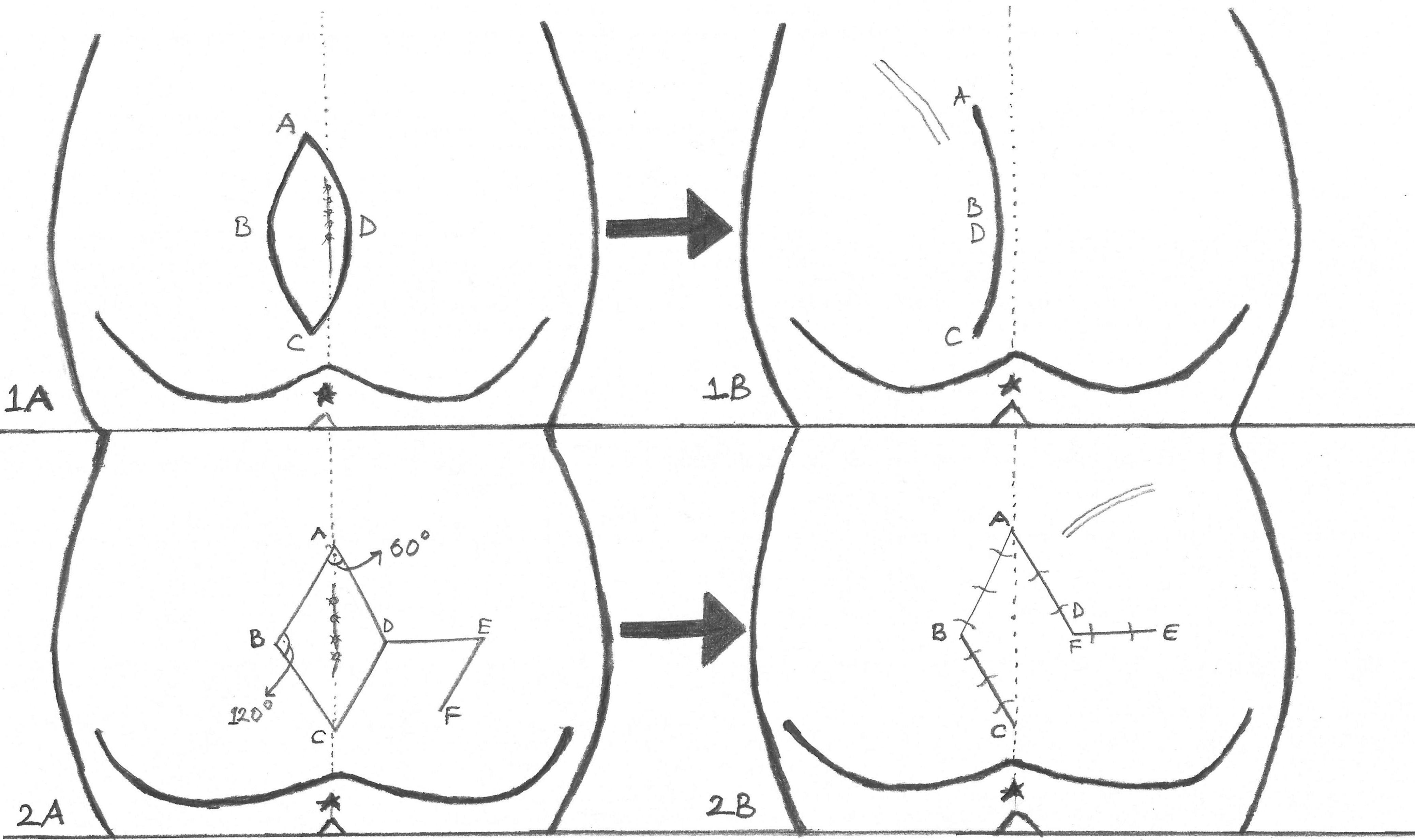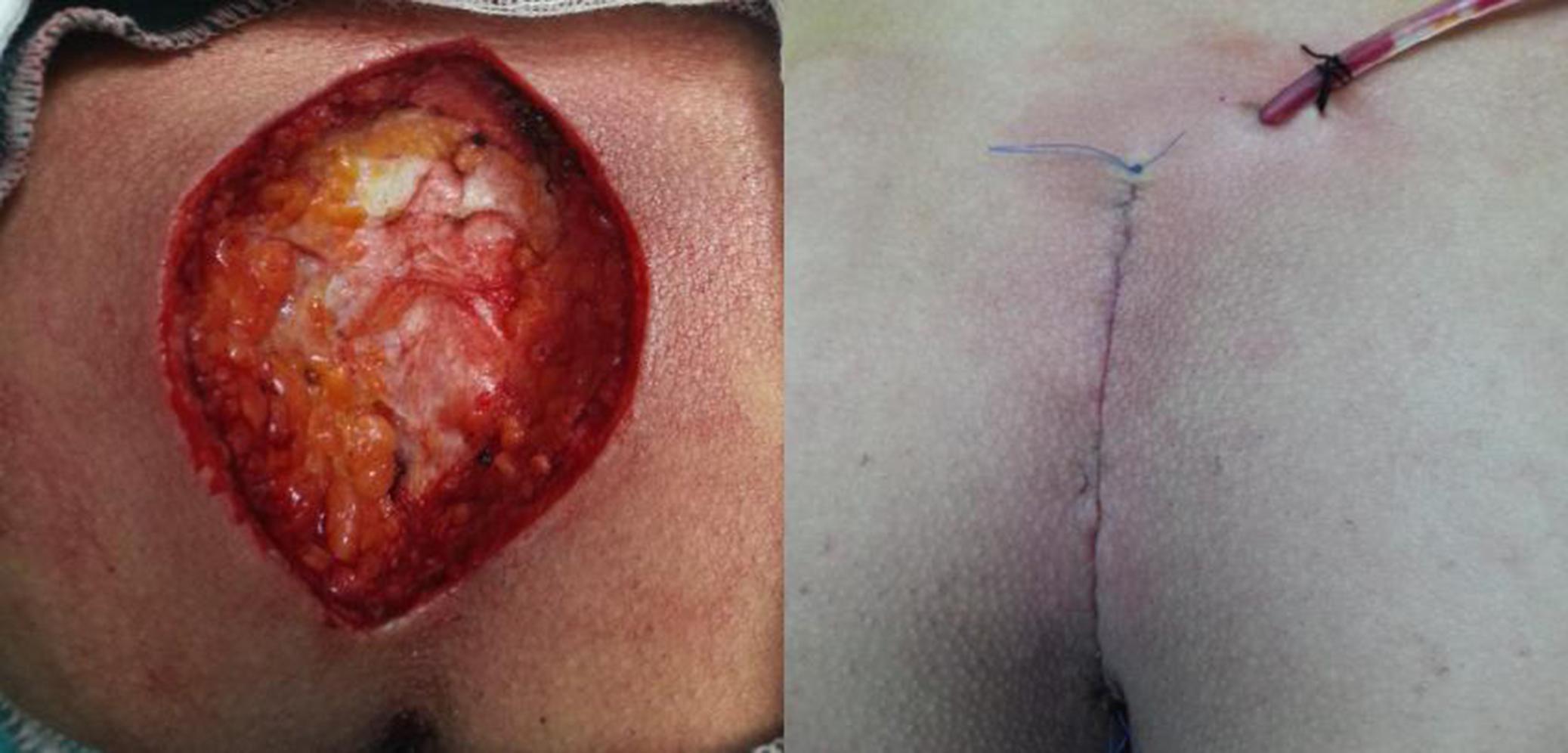OBJECTIVE:
Sacrococcygeal pilonidal sinus is common in young men and may recur over time after surgery. We investigated whether a factor exists that can aid in the determination of the preferred technique between the early Limberg flap and Karydakis flap techniques for treating recurrent pilonidal sinus.
MATERIALS AND METHODS:
This prospective and randomized study enrolled 71 patients with recurrent pilonidal sinus in whom the Limberg flap or Karydakis flap techniques were applied for reconstruction after excision. Patients were divided into two groups as follows: 37 patients were treated with the Limberg flap technique and 34 patients were treated with the Karydakis flap technique. Fluid collection, wound infection, flap edema, hematoma, partial wound separation, return to daily activities, pain score, complete healing time, painless seating and patient satisfaction were compared between the groups. ClinicalTrial.gov: NCT02287935.
RESULTS:
The development rates of total fluid collection, wound infection, flap edema, hematoma, and partial wound separation were 9.8%, 16%, 7%, 15% and 4.2%, respectively; total flap necrosis was not observed in any patient (p<0.001). During the average follow-up of 28 months, no patients (0%) developed recurrent disease. The two groups differed with respect to early surgical complications (p<0.001).
CONCLUSION:
In this study, use of the Limberg flap was associated with lower complication rates, shorter length of hospital stay, early return to work, low pain score, high patient satisfaction and better complete healing duration. Therefore, we recommend the Limberg flap for treatment of recurrent pilonidal sinus.
Karydakis flap; Limberg technique; Recurrent pilonidal sinus



